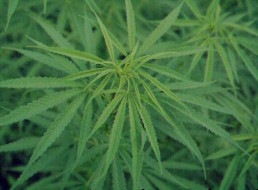Know Your Medicine Part 1 - Sativa
Know Your Medicine Part 1 – Sativa
A girl diagnosed with Depression walks into a pharmacy.
She hands a script to the pharmacist and explains, “My doctor gave me a prescription for an antidepressant.”
The pharmacist shuffles through the shop and collects three antidepressant medications from the shelves. He presents them to the girl at the counter, explaining each medicine alleviates depression symptoms.
“Which one would you like?”
“I’ll take the Prozac,” responds the girl.
Due to strict medical guidelines, you will not observe an interaction such as the one above between a patient and pharmacist. A prescription for a specific medicine would have been given, along with a packet of drug information on chemical composition, side effects, and uses.
For medical marijuana patients, a script may be obtained from their doctor, or they may receive guidance from dispensary attendants, but it is truly up to the person to know their medicine.
Let’s explore strain characteristics of Sativa, Indica, and Hybrid, including their physical and chemical properties, effects, and uses in modern medicine.
Physical Properties
- sativa, or Sativa, produces some of the most popular strains available to medicinal and recreational marijuana users. The plant is characterized by a “tall, leggy stature,” and boasts an extensive root system. Leaves are large, but thin.
Sativa plants come in a variety of heights. Some report fronds reaching up to 20 feet (6 m) high in an outdoor setting. In general, Sativa takes longer to grow than its cannabis counterparts.
Effects
Sativa provides an array of positive effects. Strains are generally characterized by higher THC content and lower levels of other cannabinoids such as cannabinol (CBN) or cannabidiols (CBD). The chemical make-up of Sativa can result in the following medicinal benefits:
- Mind-high, alertness, energy, optimism, increased creativity and focus, improved mood, increased appetite, pain reduction, muscle relaxation.
As with any medicine, negative side effects can occur as well. Some pure Sativa strains contain an unprecedented amount of THC, which may result in unwanted effects depending on the patient.
In the 70s and 80s, marijuana in the U.S. carried approximately 1% THC content. By the 1990s, cannabis possessed an average level of 3%-5%. Twenty-first century pot boasts an average THC content of 12.3%.
Jump to the 2015 Denver Cannabis Cup and meet Cindy White, a 25% THC Sativa from The Green Solution, a popular dispensary in Denver, CO.
The evolution of cannabis from the 1970s to present day shows that growers are increasingly focused on generating strains with higher levels of THC. But what does this mean for patients?
THC molecules are the psychoactive cannabinoids in cannabis. If THC content is increased, the patient may experience a more cerebral, energetic high. To avoid overstimulation or anxiety, patients may want to try Hybrid strains, which we will discuss in Part III of the series, “Know Your Medicine.”
Uses
Increased THC levels that can accompany Sativa reportedly generate a lively high. Due to stimulating effects of the strain, it is usually recommended for day use. “In general, Sativa is better for treating milder physical or mental problems.”
Sativa strains may be used to treat the following symptoms:
-Depression
-Nausea
-Decreased appetite
-Headaches/Migraines
-Minor aches and pains
Treatment
Different from drugs like antidepressants, most strains of Sativa have not been directly assigned to specific medical conditions. Rather than pair a certain strain to an ailment, Sativa is used to alleviate symptoms in a variety of illnesses.
Science is currently exploring medicinal benefits of Sativa in relation to the following conditions:
-Anxiety
-Depression
-PTSD
-Bipolar Disorder
-Tourette’s Syndrome
-Migraines
-ADHD
Overall, C. Sativa can be an effective method in treating a myriad of symptoms; however, more research is needed to determine which specific conditions are best treated with the strain.
In Part II of “Know Your Medicine,” we will examine Indica and its overall properties.

